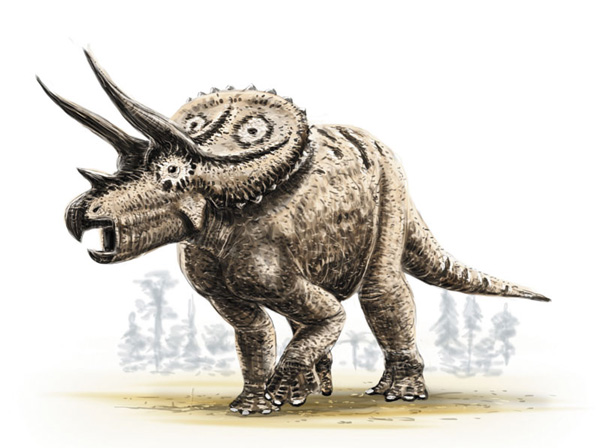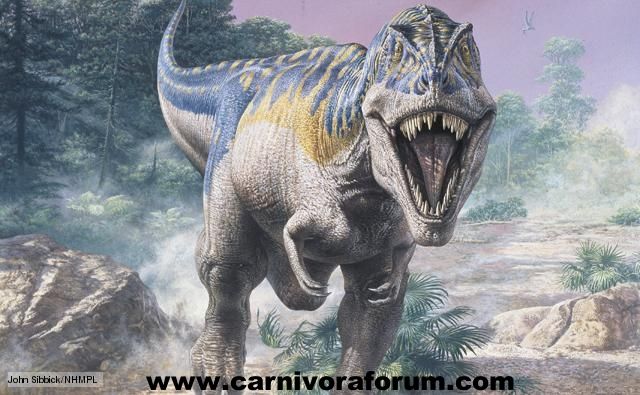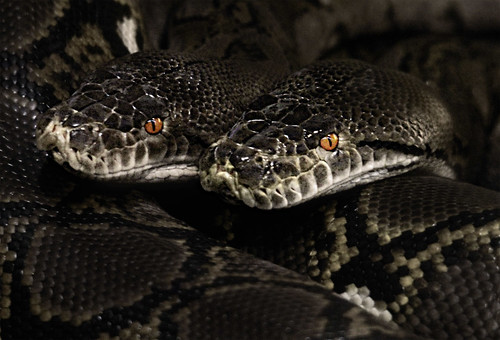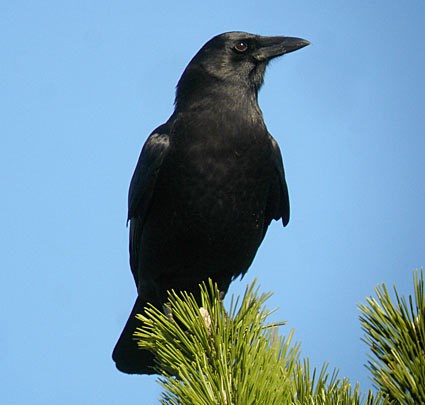Post by DinosaurMichael on Feb 27, 2012 20:13:39 GMT -5
African Bush Elephant - Loxodonta africana
The African Bush Elephant or African Savanna Elephant (Loxodonta africana) is the larger of the two species of African elephant. Both it and the African Forest Elephant have usually been classified as a single species, known simply as the African Elephant. Some authorities still consider the currently available evidence insufficient for splitting the African Elephant into two species. It is also known as the Bush Elephant. The African Elephant is the largest living terrestrial animal, normally reaching 6 to 7.3 metres (19.7 to 24.0 ft) in length and 3.5 to 4 metres (11.5 to 13.1 ft) in height at the head, and weighing between 6,000 to 9,000 kg (13,000 to 20,000 lb). The largest on record, shot in Angola in 1955, was a bull weighing 12,274 kg (27,060 lbs and standing 4.2 metres (13.8 ft) high, the body of which is now mounted in the rotunda of the National Museum of Natural History in Washington, D.C.. (The museum's website states that the specimen weighs only 8 tons.) The Bush Elephant normally moves at a rate of 6 km/h (4 mph), but it can reach a top speed of 40 km/h (25 mph) when scared or upset. The animal is characterized by its large head; two large ears that cover its shoulders and radiate excess heat; a large and muscular trunk; two prominent tusks, which are well-developed in both sexes, although more commonly in males; a short neck; a large, barrel-like body; four long and heavy legs; and a relatively short tail. The animal is protected by a heavy but flexible layer of gray-brown skin, dotted with mostly undeveloped patches of hair and long, black hair at the tip of its tail. Its back feet have three toes that form a hoof, while the number of toes on the front feet have varied between four and five. The forehead is smoother and less convex than that of the Asian Elephant. The trunk is the most characteristic feature of the African Bush Elephant. It is formed by the fusion and elongation of the nose and upper lip, forming a flexible and strong organ made purely of muscle. Little scientific research has been carried out into elephants' cognitive or perceptual abilities. An exception is a recent report that African Bush Elephants are able to use seismic vibrations at infrasound frequencies for communication.

Triceratops - Triceratops horridus
Triceratops ( /traɪˈsɛrətɒps/ try-SERR-ə-tops) is a genus of herbivorous ceratopsid dinosaur which lived during the late Maastrichtian stage of the Late Cretaceous Period, around 68 to 65 million years ago (Mya) in what is now North America. It was one of the last dinosaur genera to appear before the great Cretaceous–Paleogene extinction event. The term Triceratops, which literally means "three-horned face," is derived from the Greek τρί- (tri-) meaning "three", κέρας (kéras) meaning "horn", and ὤψ (ops) meaning "face". Bearing a large bony frill and three horns on its large four-legged body, and conjuring similarities with the modern rhinoceros, Triceratops is one of the most recognizable of all dinosaurs and the best known ceratopsid. It shared the landscape with and was preyed upon by the fearsome Tyrannosaurus, though it is less certain that the two did battle in the manner often depicted in traditional museum displays and popular images. The exact placement of the Triceratops genus within the ceratopsid group has been debated by paleontologists. Two species, T. horridus and T. prorsus, are considered valid although many other species have been named. Recent research suggests that the contemporaneous Torosaurus, a ceratopsid long regarded as a separate genus, actually represents Triceratops in its mature form. Triceratops has been documented by numerous remains collected since the genus was first described in 1889, including at least one complete individual skeleton. Paleontologist John Scannella observed: "It is hard to walk out into the Hell Creek Formation and not stumble upon a Triceratops weathering out of a hillside." Forty-seven complete or partial skulls were discovered in just that area during the decade 2000–2010. Specimens representing life stages from hatchling to adult have been found. The function of the frills and three distinctive facial horns has long inspired debate. Traditionally these have been viewed as defensive weapons against predators. More recent theories, noting the presence of blood vessels in the skull bones of ceratopsids, find it more probable that these features were primarily used in identification, courtship and dominance displays, much like the antlers and horns of modern reindeer, mountain goats, or rhinoceros beetles. The theory finds additional support if Torosaurus represents the mature form of Triceratops, as this would mean the frill also developed holes (fenestrae) as individuals reached maturity, rendering the structure more useful for display than defense. Individual Triceratops are estimated to have reached about 7.9 to 9.0 m (26.0–29.5 ft) in length, 2.9 to 3.0 m (9.5–9.8 ft) in height, and 6.1–12.0 tonnes (13,000–26,000 lb) in weight. The most distinctive feature is their large skull, among the largest of all land animals. The largest known skull (specimen BYU 12183) is estimated to have been 2.5 metres (8.2 ft) in length when complete, and could reach almost a third of the length of the entire animal. It bore a single horn on the snout, above the nostrils, and a pair of horns approximately 1 m (3 ft) long, with one above each eye. To the rear of the skull was a relatively short, bony frill, adorned with epoccipitals in some specimens. Most other ceratopsids had large fenestrae in their frills, while those of Triceratops were noticeably solid. The skin of Triceratops was unusual compared to other dinosaurs. Skin impressions from an as-yet undescribed specimen show that some species may have been covered in bristle-like structures, similar to the more primitive ceratopsian Psittacosaurus.

The African Bush Elephant or African Savanna Elephant (Loxodonta africana) is the larger of the two species of African elephant. Both it and the African Forest Elephant have usually been classified as a single species, known simply as the African Elephant. Some authorities still consider the currently available evidence insufficient for splitting the African Elephant into two species. It is also known as the Bush Elephant. The African Elephant is the largest living terrestrial animal, normally reaching 6 to 7.3 metres (19.7 to 24.0 ft) in length and 3.5 to 4 metres (11.5 to 13.1 ft) in height at the head, and weighing between 6,000 to 9,000 kg (13,000 to 20,000 lb). The largest on record, shot in Angola in 1955, was a bull weighing 12,274 kg (27,060 lbs and standing 4.2 metres (13.8 ft) high, the body of which is now mounted in the rotunda of the National Museum of Natural History in Washington, D.C.. (The museum's website states that the specimen weighs only 8 tons.) The Bush Elephant normally moves at a rate of 6 km/h (4 mph), but it can reach a top speed of 40 km/h (25 mph) when scared or upset. The animal is characterized by its large head; two large ears that cover its shoulders and radiate excess heat; a large and muscular trunk; two prominent tusks, which are well-developed in both sexes, although more commonly in males; a short neck; a large, barrel-like body; four long and heavy legs; and a relatively short tail. The animal is protected by a heavy but flexible layer of gray-brown skin, dotted with mostly undeveloped patches of hair and long, black hair at the tip of its tail. Its back feet have three toes that form a hoof, while the number of toes on the front feet have varied between four and five. The forehead is smoother and less convex than that of the Asian Elephant. The trunk is the most characteristic feature of the African Bush Elephant. It is formed by the fusion and elongation of the nose and upper lip, forming a flexible and strong organ made purely of muscle. Little scientific research has been carried out into elephants' cognitive or perceptual abilities. An exception is a recent report that African Bush Elephants are able to use seismic vibrations at infrasound frequencies for communication.

Triceratops - Triceratops horridus
Triceratops ( /traɪˈsɛrətɒps/ try-SERR-ə-tops) is a genus of herbivorous ceratopsid dinosaur which lived during the late Maastrichtian stage of the Late Cretaceous Period, around 68 to 65 million years ago (Mya) in what is now North America. It was one of the last dinosaur genera to appear before the great Cretaceous–Paleogene extinction event. The term Triceratops, which literally means "three-horned face," is derived from the Greek τρί- (tri-) meaning "three", κέρας (kéras) meaning "horn", and ὤψ (ops) meaning "face". Bearing a large bony frill and three horns on its large four-legged body, and conjuring similarities with the modern rhinoceros, Triceratops is one of the most recognizable of all dinosaurs and the best known ceratopsid. It shared the landscape with and was preyed upon by the fearsome Tyrannosaurus, though it is less certain that the two did battle in the manner often depicted in traditional museum displays and popular images. The exact placement of the Triceratops genus within the ceratopsid group has been debated by paleontologists. Two species, T. horridus and T. prorsus, are considered valid although many other species have been named. Recent research suggests that the contemporaneous Torosaurus, a ceratopsid long regarded as a separate genus, actually represents Triceratops in its mature form. Triceratops has been documented by numerous remains collected since the genus was first described in 1889, including at least one complete individual skeleton. Paleontologist John Scannella observed: "It is hard to walk out into the Hell Creek Formation and not stumble upon a Triceratops weathering out of a hillside." Forty-seven complete or partial skulls were discovered in just that area during the decade 2000–2010. Specimens representing life stages from hatchling to adult have been found. The function of the frills and three distinctive facial horns has long inspired debate. Traditionally these have been viewed as defensive weapons against predators. More recent theories, noting the presence of blood vessels in the skull bones of ceratopsids, find it more probable that these features were primarily used in identification, courtship and dominance displays, much like the antlers and horns of modern reindeer, mountain goats, or rhinoceros beetles. The theory finds additional support if Torosaurus represents the mature form of Triceratops, as this would mean the frill also developed holes (fenestrae) as individuals reached maturity, rendering the structure more useful for display than defense. Individual Triceratops are estimated to have reached about 7.9 to 9.0 m (26.0–29.5 ft) in length, 2.9 to 3.0 m (9.5–9.8 ft) in height, and 6.1–12.0 tonnes (13,000–26,000 lb) in weight. The most distinctive feature is their large skull, among the largest of all land animals. The largest known skull (specimen BYU 12183) is estimated to have been 2.5 metres (8.2 ft) in length when complete, and could reach almost a third of the length of the entire animal. It bore a single horn on the snout, above the nostrils, and a pair of horns approximately 1 m (3 ft) long, with one above each eye. To the rear of the skull was a relatively short, bony frill, adorned with epoccipitals in some specimens. Most other ceratopsids had large fenestrae in their frills, while those of Triceratops were noticeably solid. The skin of Triceratops was unusual compared to other dinosaurs. Skin impressions from an as-yet undescribed specimen show that some species may have been covered in bristle-like structures, similar to the more primitive ceratopsian Psittacosaurus.
















